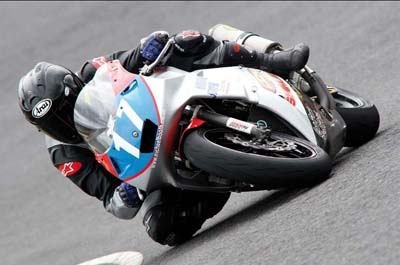articles/Sports/sportingchance-page2
Sporting Chance - part 2 of 1 2 3 4 5 6 7
by Mike McNamee Published 01/09/2006

At most Premier Division grounds you will be pushed back at least another 10 yards from the goal by the slightly wider pitch and by the advertising banners. The upshot is that a 400mm lens gives you near optimum coverage.
Remember that this is the 35mm effective focal length, a 300mm on a DSLR with a reduced chip might be just right also.
Anyone for Cricket?
It would be foolish to pretend that all you needed was a 400mm f2.8 lens. If your ambitions are towards cricket then even longer lengths are going to be needed - these guys regard a 300mm lens as a wide angle!
The distance to the centre of the square at Trent Bridge varies from 61 yards at the Radcliffe Road end to 72 yards to the Parr Stand. To that you need to add another 6 yards for advertising hoardings - the boundary rope is usually set close to the outer limits of the ground for test matches.
In addition you need to add a little under 11 yards for batsmen at the far wicket and subtract the same amount for those at the near crease. For side-on shots, of course, you maintain a constant 60 to 70 yards depending on where the wicket has been set. You are thus left staring down the barrel of an 800mm lens and sometimes a converter as well. Fortunately cricket is most often played is good light but even so if you use 100ISO

as your speed, your baseline exposure speed is 1/500ths (or 1/2000ths at 400ISO). Using a 2x converter will cost you two stops and so you drop to an almost unmanageable 1/125th if you stay on ISO 100. Using a converter is a double whammy, you need faster shutter speeds to accommodate the higher magnification, but you are losing aperture at the same time. As with all photography, the settings are a compromise between camera shake, subject speed, digital noise and sometimes the simple need to just get a shot at all costs!
Shutter Speed Selection
Assuming that you need sharp images, it is possible to compute the required shutter speed to stop action under various circumstances. Typical subject speeds are shown in the table (they vary - international class athletes go faster, hit faster, bowl faster, etc). For a 300mm lens the shutter speeds at various distances and speeds are shown.
By way of example if we take a hockey player moving at 20mph (equivalent to12s for 100 metres) and a distance of 20m, we require 1/6000th to stop the action. This would need an aperture of f2.8 and an ISO of 200 in bright sunshine, close to the limit of available technology.
Please Note:
There is more than one page for this Article.
You are currently on page 2
- Sporting Chance page 1
- Sporting Chance page 2
- Sporting Chance page 3
- Sporting Chance page 4
- Sporting Chance page 5
- Sporting Chance page 6
- Sporting Chance page 7
1st Published 01/09/2006
last update 18/07/2022 16:35:44
More Sports Articles
There are 19 days to get ready for The Society of Photographers Convention and Trade Show at The Novotel London West, Hammersmith ...
which starts on Wednesday 14th January 2026








